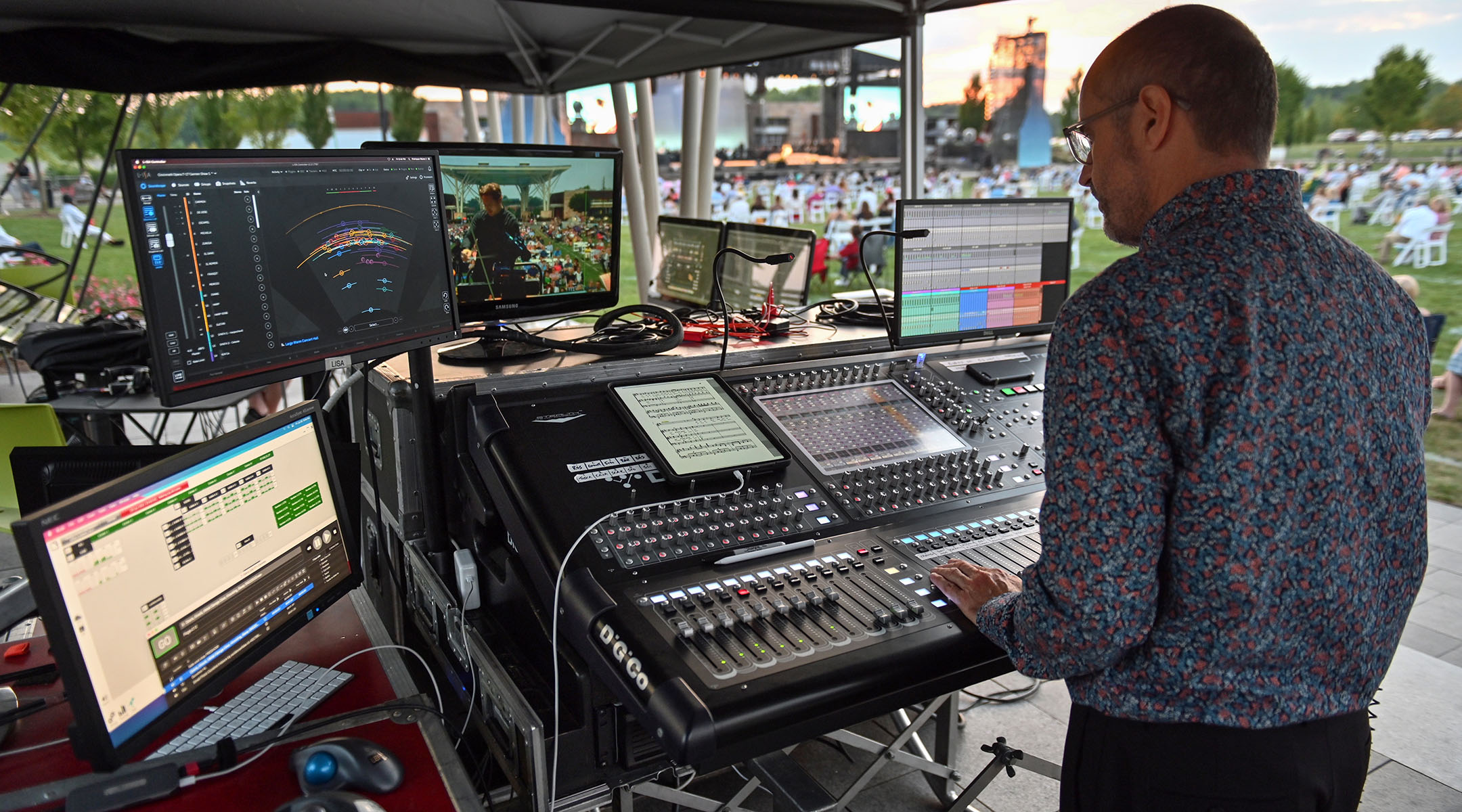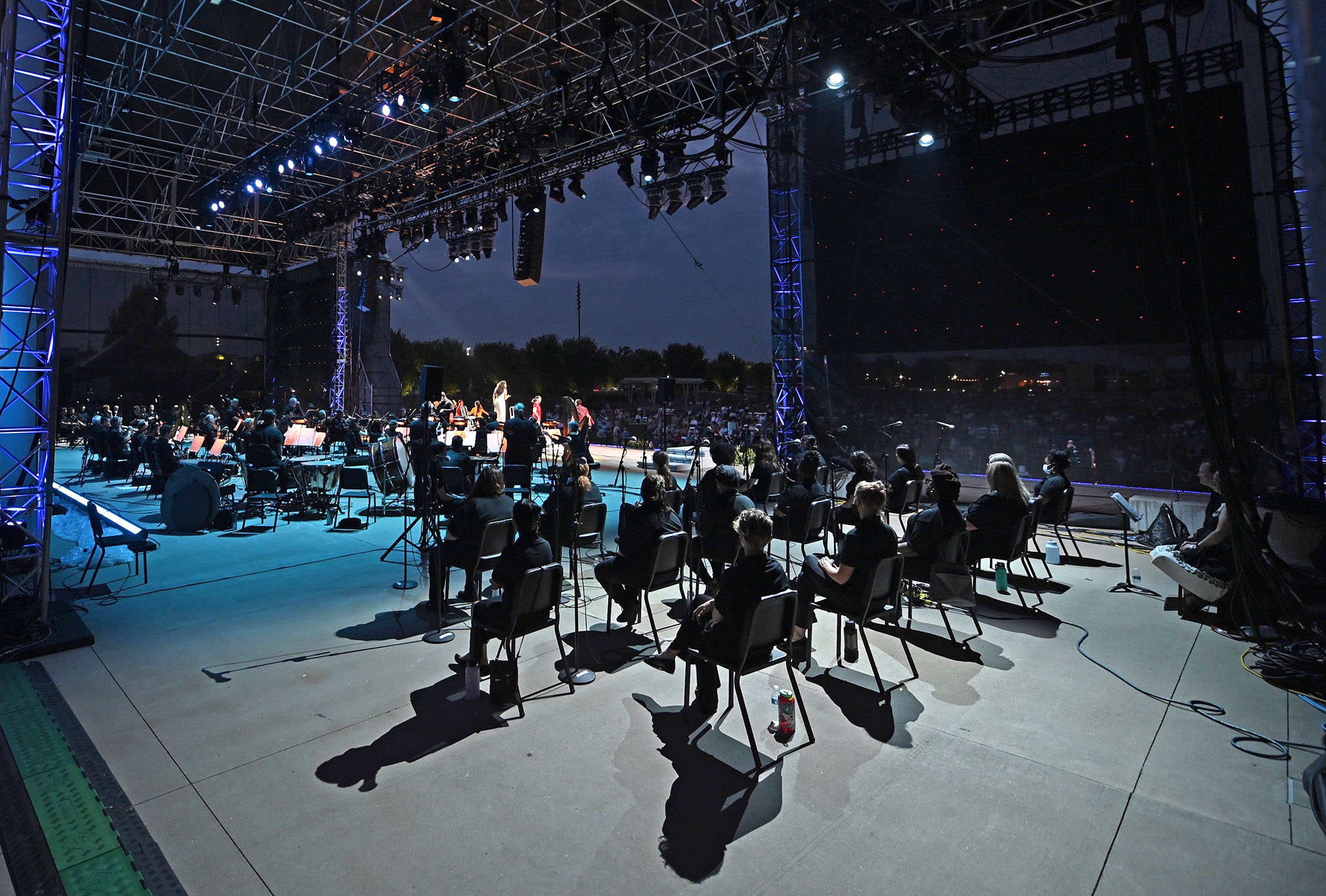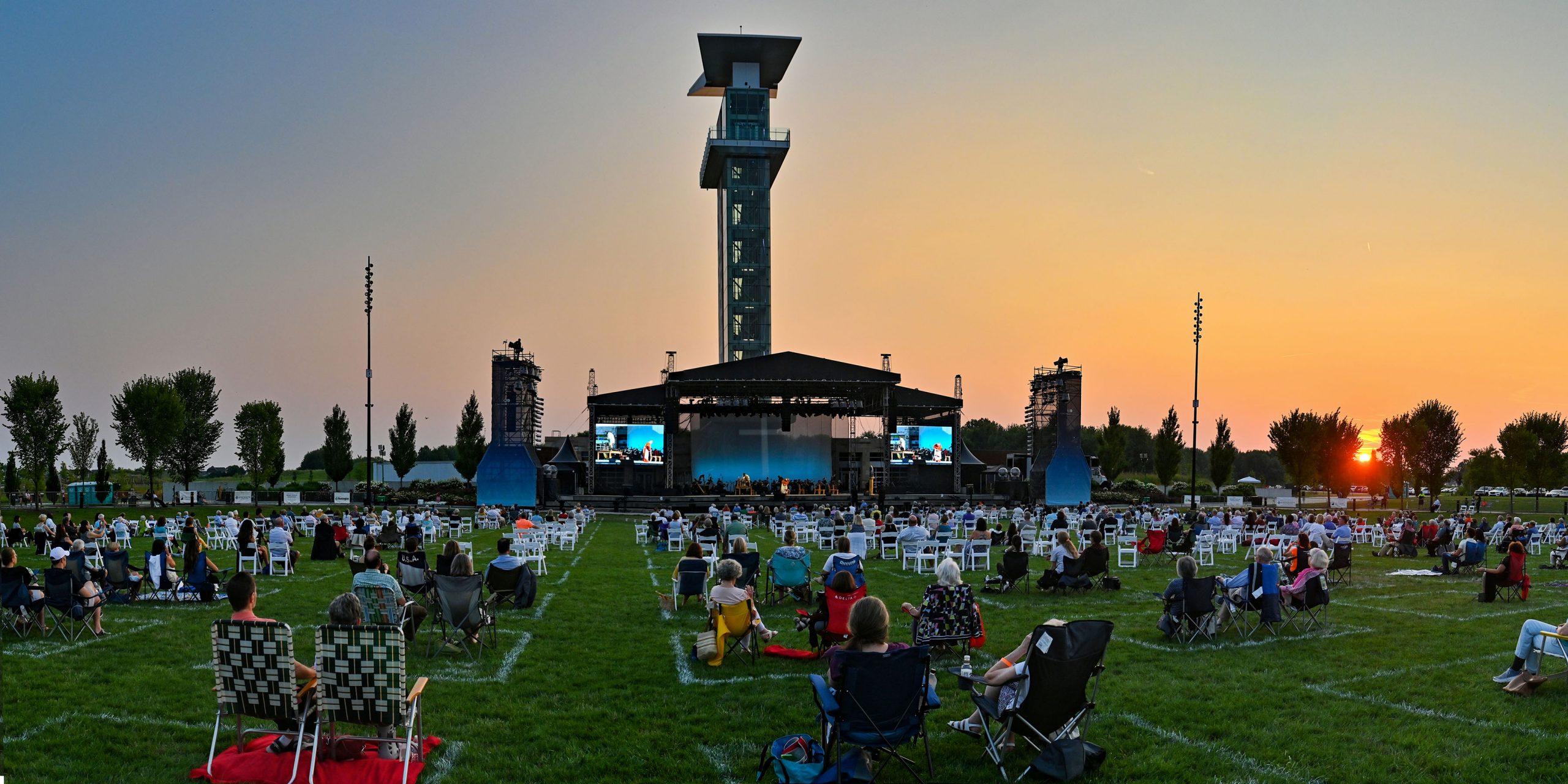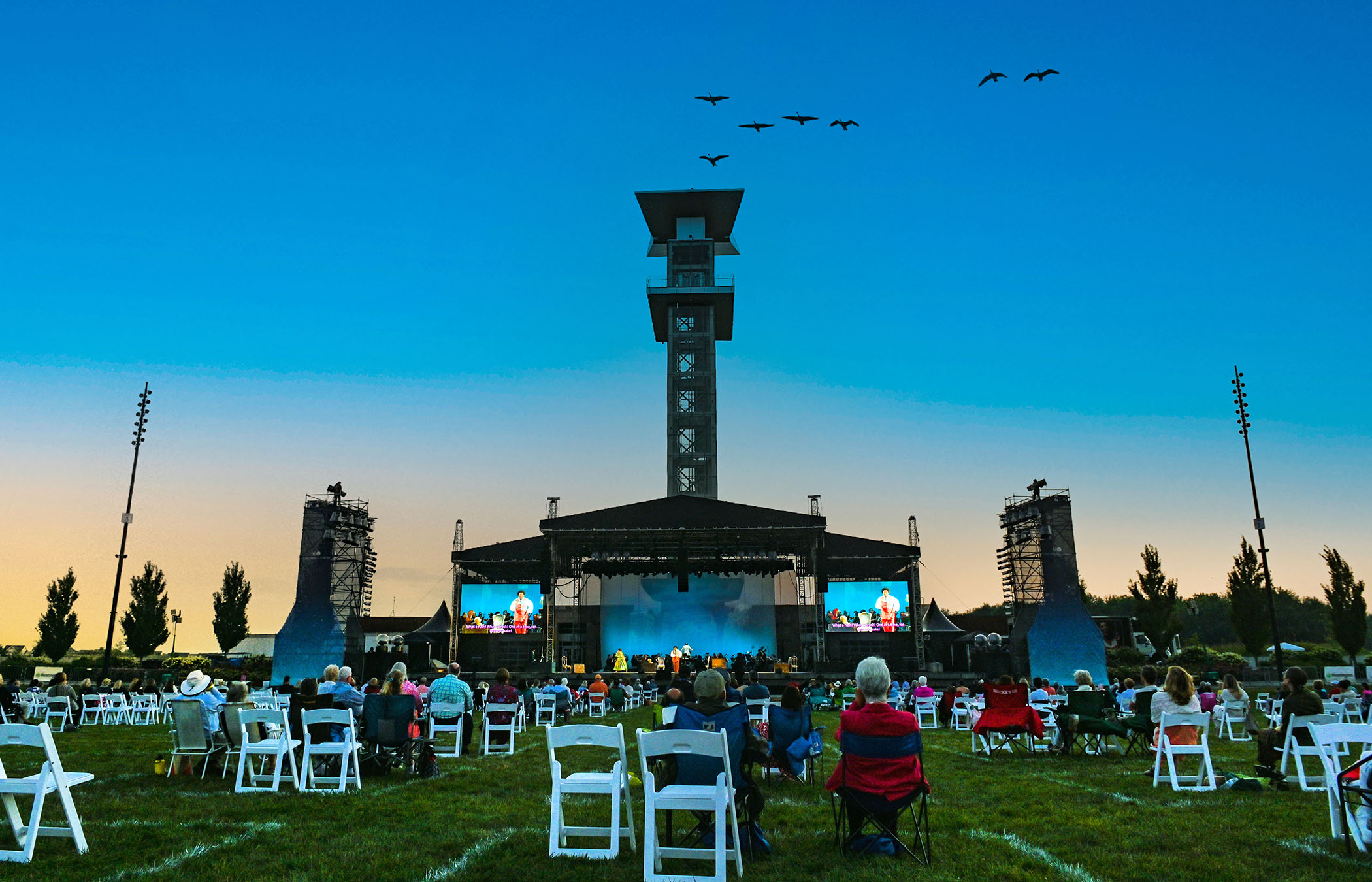L-ISA Helps Cincinnati Opera “Build” a Performance Hall in a Park L-ISA Helps Cincinnati Opera “Build” a Performance Hall in a Park...
L-Acoustics L-ISA technology allowed the opera to construct a virtual performance hall around the stage, assuring an authentic classical opera experience for an avid audience
CINCINNATI, Ohio – September 2021 – On the outskirts of Cincinnati, the city of Blue Ash came to life this summer with the sounds of Carmen, Tosca, and The Barber of Seville reimagined for Cincinnati Opera’s Summer at Summit series, held outdoors from July 11 to August 1 at Summit Park. It was everything that lovers of the acclaimed Cincinnati Opera had come to expect: glorious singing, inspiring storytelling, and enchanting music from internationally renowned guest artists, the Cincinnati Symphony Orchestra, and the Cincinnati Opera Chorus. What was unexpected was the outdoor setting. A choice driven by the Covid pandemic, the space allowed for an under-the-stars experience, yet with all the grandeur of grand opera theater sound, thanks to the use of L-ISA immersive technology provided by L-Acoustics.
A system co-designed by Jonathan Burke, who directs the sound design program in the School of Theater, Film, and Television at UCLA, incorporated the best of L-Acoustics’ broad range of technologies. Sixty Kara II enclosures were configured as five arrays of a dozen enclosures each, all flown from towers and the stage canopy, as the Scene system. The arrays benefited from L-Acoustics Panflex horizontal steering, which assured coverage over the entire seating area extending 450 feet from the stage.
In addition, 16 KS28 subs were arrayed in a center arc on the ground, while nine Kiva II enclosures were deployed as frontfills along the leading edge of the stage, placed atop the subs. Finally, six Syva medium-throw colinear source speakers were mounted on light poles at the rear of the seating area and, using L-ISA Room Engine functionality, created the rear-surround array. All components were provided by Firehouse Productions.
“This was a unique deployment of L-ISA,” says Marcus Ross, Director of Applications, Americas at L-Acoustics. “Due to weight restrictions on the outdoor stage, we had to disperse the Scene arrays wider than usual, instead of over the stage. It’s not how we normally configure speakers for L-ISA, but what this deployment did is show how flexible the system really is. And it was also able to overcome a number of other challenges in this situation, including the fact that the seating was so widely dispersed—the first row was 50 feet from the stage!”
The mission was to create an operatic experience outdoors, and L-ISA accomplished that. “We looked at how to add surround speakers in an inconspicuous way so that the illusion of reverb was built into the sound system from the start,” comments Burke, who spent a day at L-Acoustics Westlake Village studios familiarizing himself with L-ISA and with mixing object-based live audio before collaborating with Ross and L-Acoustics Application Engineer Jordan Tani on the system design for the Summer at Summit series. “I’ve spent some time working with immersive audio systems such as Dolby Atmos, but this is the first time I was going to mix immersive sound live,” he says. “It really is a new and wonderful world.”
Burke says he enjoyed being able to broaden the sound field through the L-ISA Processor, creating an enveloping sonic landscape for the audience, yet still able to precisely place each instrument in that sound field exactly where it actually was on stage. “The spatialization of the orchestra was spectacular—the harp, tympani, and other elements were exactly where they were supposed to be, and the detail of each instrument was as if you were standing next to them,” he marvels. “We could also get creative: we could widen out the chorus, for instance, and move other elements a bit upstage or downstage if we wanted.”
But he and the cast saved their greatest accolades for the L-ISA Room Engine functionality, which emulated a theatrical room environment so authentically that opera vocalists were amazed. “They said they really felt as though they were in an enclosed space, with reflections off of walls,” he says. “There was no vocal monitoring, no foldback—they really felt supported by the ‘room.’ On shows like this, I’ll usually have reverb on a fader I can bring up as needed, but on these shows, we needed none of that. The Room Engine created all the ambiance we needed and wanted.
“Plus, the gain-before-feedback was great. We didn’t run our levels particularly loud, but the system gave us plenty of output and not a hint of feedback. Since no two objects are summed together like a traditional system, we were able to get amazing detail and gain with minimal EQ because each object has its own unique relationship to the speakers and within the sound field. This was a real eye-opener for me. L-ISA made everyone feel like they were truly in a theater. I even began to creep in the sounds of the orchestra about ten minutes before the show began, so you could hear everyone tuning and warming up in the same sound environment, just as you would hear in a concert hall. It was all quite incredible.”
For info on Cincinnati Opera’s Summer at Summit series, visit www.cincinnatiopera.org. Firehouse Productions can be found online at www.firehouseproductions.com.



